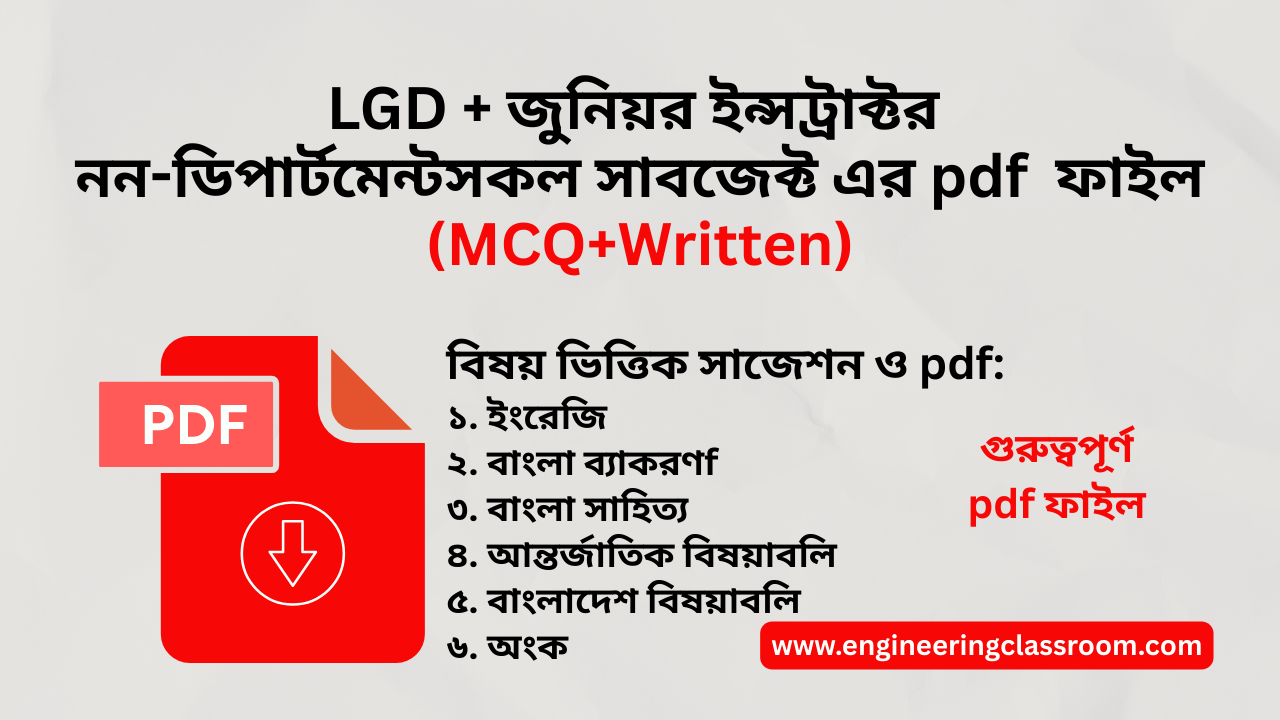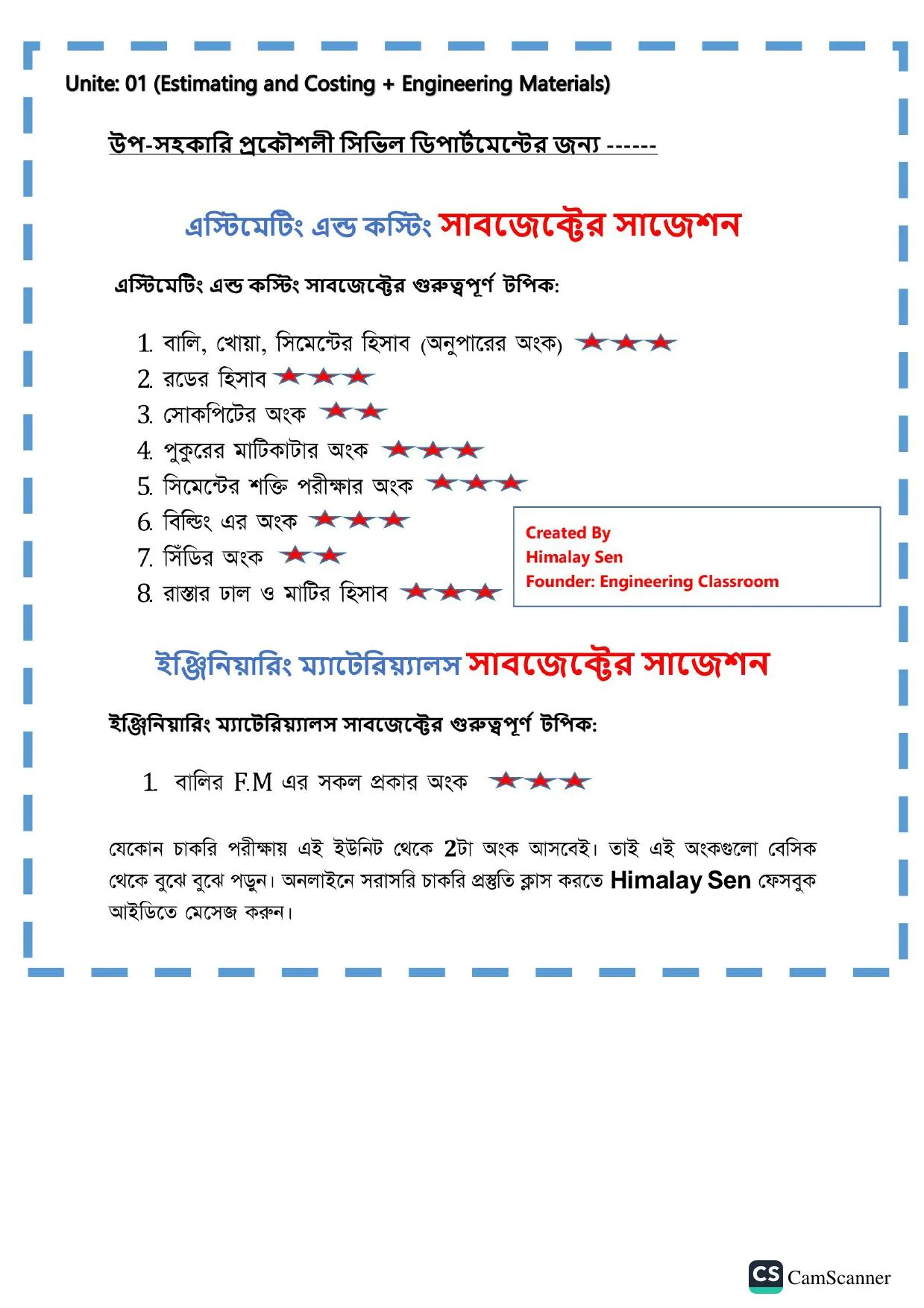MCQ
22281. The silica in Portland cement should be
10 to 20%
20 to 25%
25 to 40%
40 to 60%
ব্যাখ্যা: ব্যাখ্যা: ১। ক্যালসিয়াম অক্সাইড (CaO)..........63%
২। ম্যাগনেশিয়াম অক্সাইড (MgO)..........2%
৩। সিলিকা (SiO₂)..........22%
৪। অ্যালুমিনা (Al2O3)..........7%
৫। আয়রন অক্সাইড (Fe2O3)..........3%
৬। সালফার ট্রাই-অক্সাইড (SO3).........2%
৭। ক্ষারকীয় পদার্থ...........1%
........ মোট 100%
22282. The normal consistency of Portland cement is about-
10%
15%
20%
25%
22283. The commonly used lime in white washing is---
quick lime
fat lime
lean lime
hydraulic lime
22284. The compressive strength of paving bricks should not be less than-
20 MN/m²
30 MN/m²
40 MN/m²
50 MN/m²
22285. The average out-turn of first class bricks in kiln burning is-
50 to 60%
60 to 70%
70 to 80%
80 to 90%
22286. The fuel generally used for burning limestone is
coalur
firewood
charcoal
any one of these
22287. For the construction of retaining walls, a------stone must be used.
soft
hard
heavy
light
22288. The percentage of alumina in a good brick clay should vary from-
20 to 30%
30 to 40%
40 to 50%
50 to 60%
22289. The burning of bricks in kilns is completed within-----hours.
12
24
48
96
22290. The final setting time of ordinary cement should not be more than-
2 hours,
4 hours
4 hours
10 hours
22291. The average out-turn of first class bricks in clamp burning is about-
50%
60%
70%
80%
22292. The natural drying of bricks is also called back drying.
true
false
22293. The frog of a brick is normally made on its-
longer face
bottom face
shorter face
top face
ব্যাখ্যা: ব্যাখ্যা: ইটের যে-কোনো একপাশে খোদাইকৃত বা কোম্পানির নাম সংবলিত অংশকে ফ্রগ বলে।
22294. The size of mould for bricks should be---- the specified size of the bricks.
equal to
double
smaller than
larger than
22295. The compressive strength of perforated bricks should not be less than-
4 MN/m²
5 MN/m²
6 MN/m²
7 MN/m²
22296. The main constituent of Portland cement is-
lime
iron oxide
alumina
alkalies
22297. The percentage of the slag component of Portland-slag cement varies from-
10 to 40%
70 to 80%
40 to 70%
80 to 90%
22298. The cementing property in cement is mainly due to---
lime
silica
iron oxide
alumina
22299. For one cubic metre of brick masonry, the number of bricks required is-
400
450
500
550
ব্যাখ্যা: [Note: মেট্রিক ইট 500টি লাগে।
22300. The amount of gypsum usually added in the manufacture of cement is-
0.5 to 1%
3 to 5%
1 to 3%
0.1 to 0.5%
















